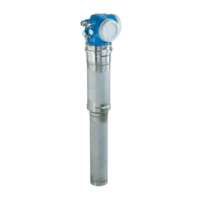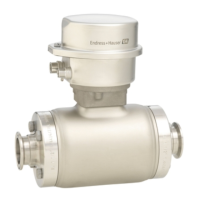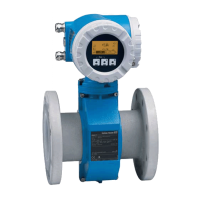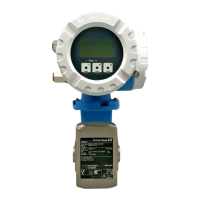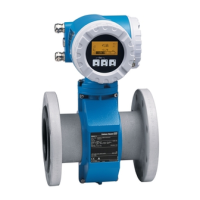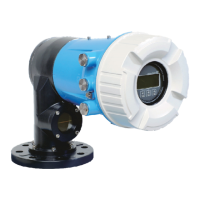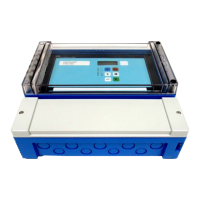Levelflex M FMP40
28 Endress+Hauser
Since the tensile forces are also heavily dependent on the viscosity of the product, a higher safety factor is
necessary for highly viscous products and if there is a risk of cornice buildup.
In critical cases it is better to use a 6 mm rope instead of a 4 mm one.
The same forces also act on the silo cover. On a fixed rope, the tensile forces are definitely greater, but this can
not be calculated. Observe the tensile strength of the probes or ensure that the tensile strength of the probes is
not exceeded (see table, → ä 6).
Options for reducing the tensile forces:
• Shorten the probe,
• If the maximum tensile load is exceeded, check whether it would be possible to use a non-contact Ultrasonic
or Level-Radar device.
Special notes for liquids • When installing in agitation units, check whether a no-contact process (Ultrasonic or Level-Radar) would be
better suited, especially if the agitator generates large mechanical loads on the probe.
• If Levelflex is, nevertheless, installed in tanks with agitators, it is better to use coax probes which have a
greater lateral loading capacity, → ä 6.
Additionally the coax probe can be protected against warping, → ä 31.
Standard installation
Using a coax probe offers great advantages when the viscosity of the product is < 500 cst and it is certain that
the product does not accumulate buildup:
• Greater reliability:
As of dielectric constant=1.4, measurement functions independently of all electrical properties in all liquids.
• Internals in the tank and nozzle dimensions do not have any influence on measurement.
• Higher lateral load-bearing capacity than rod probes.
• For higher viscosity a rod probe is recommended, or using a non-contact measuring principle with the
Level-Radar Micropilot M.
Installation in horizontal and upright cylindrical
tanks
• Use the following types of probe for measuring
ranges
– up to 4 m: rod probe (1) or coax probe (2)
– up to 10 m: separable probe
– above 10 m: 4 mm rope probe
• Installation and possible fixing as with bulk solids.
• Any distance from wall, as long as occasional
contact is prevented.
• When installing in tanks with a lot of internals or
internals situated close to the probe:
Use a coax probe!
L00-FMP4xxxx-17-00-00-yy-021

